When I finally knew that I had only a random mixed flock, I decided to stock some recognized breeds and ended up getting Black Star and Golden Comet hens.
They gave me a nice yield for almost 2 years, but faded away and had to order from the hatchery again. There, I learnt that they cannot be bred at home, and got to know about other chickens.
And I prefer heritage breeds, which align with my homestead needs, and they’ve been there in my coops still.
What Exactly Makes a Chicken “Heritage”?
Have you seen chickens in the hatchery or farm with tags like heirloom, antique, old-fashioned, or old-timey?
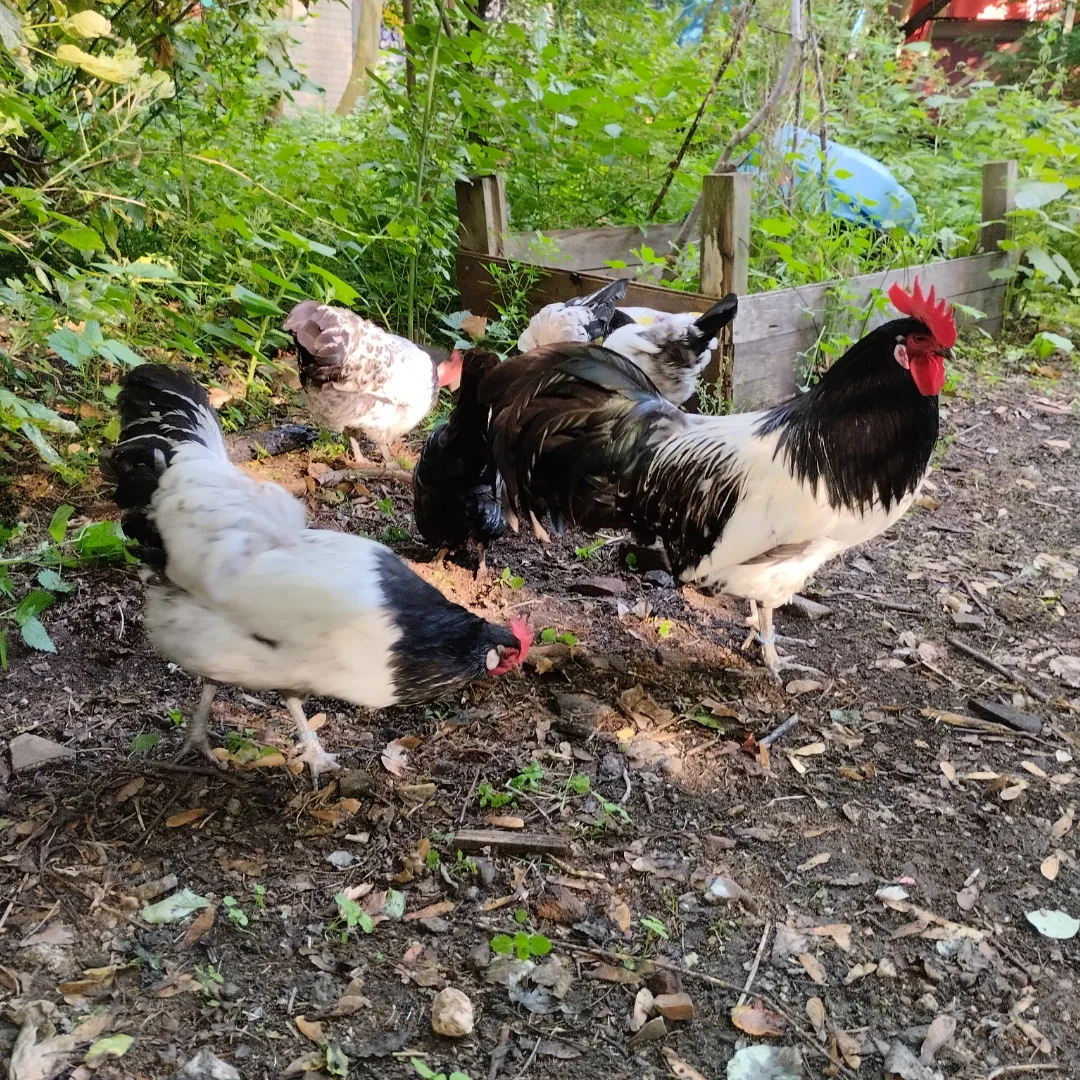
They all refer to the same heritage chickens that your grandparents or their parents kept for a long time at the homestead.
These chickens have a long history, which dates back to the mid-20th century or before. When they had a high demand in the mid-1800s, chickens were exported from Asia to Europe and then to America.
You can recognize heritage chickens with the following characteristics:
Breed True
The offspring retain traits and characteristics from their parents, so they are recognized and tackled breed more easily.
The roosters and hens exhibit similar plumage colors, patterns, and body sizes, as well as comparable weights and egg production.
Calm Temperament
I’m happy, my chickens don’t chase down my neighbors and visitors. If you’ve kids or family, they can take care of heritage breeds even without your absence.
Chickens are friendly and docile, so you can pick them up and work with them without difficulty. Feeding, watering, collecting eggs, and cleaning coops and ruins feel easy.
Resilient Health
Unlike other chickens that require frequent vaccines weekly and monthly, or live on medicines and supplements, these don’t need any treatment as such.
They’re naturally hardy animals with strong immune systems. They can thrive well in the natural setting without vet assistance.
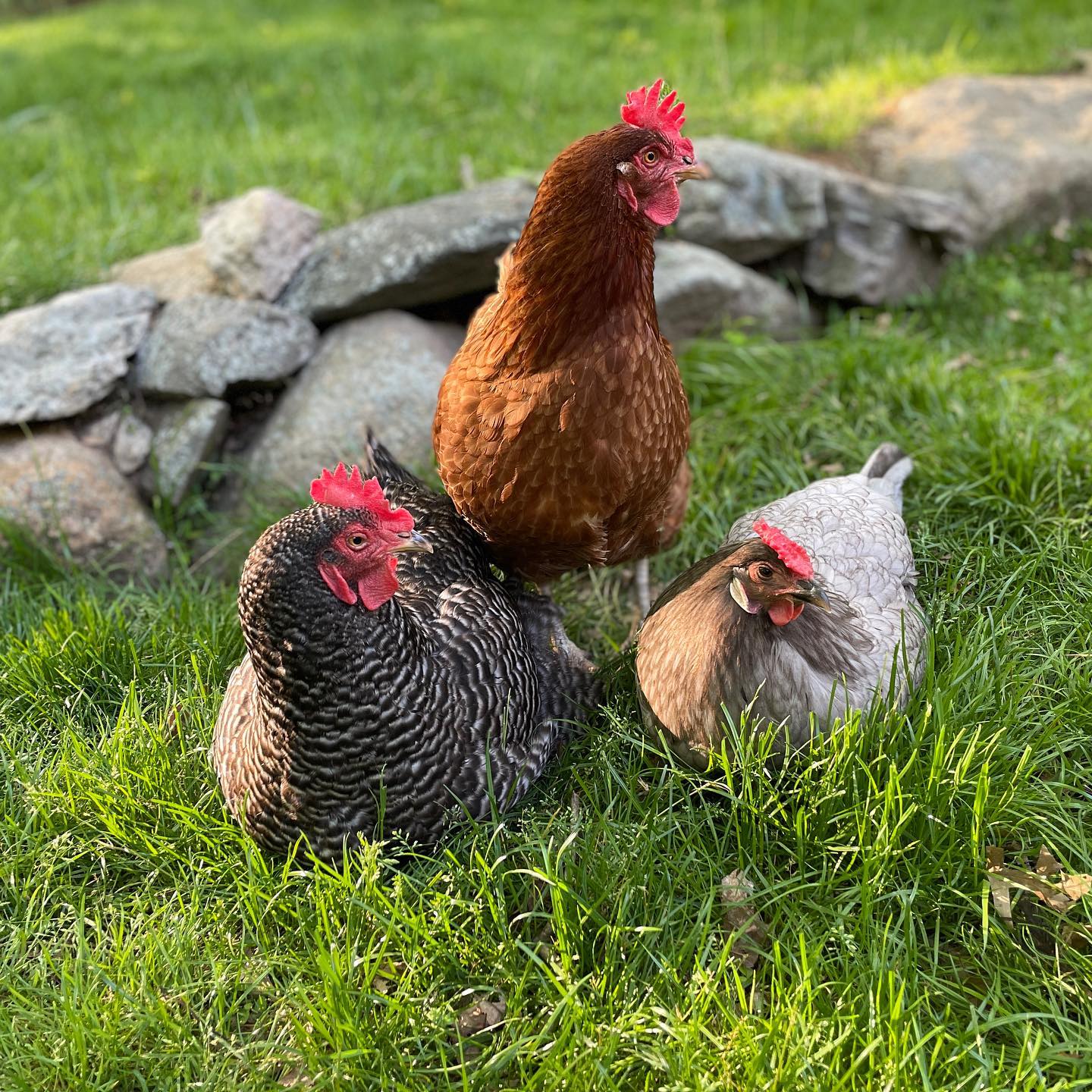
Our grandparents and great-grandparents raised poultry without access to medical facilities.
Go Broody
Hens like to sit on their eggs after laying. They go broody and hatch their own and others’ eggs and get chicks.
Also, they make good mothers and raise chicks on their own, teaching them foraging skills and defending against predators.
The new generations learn this culture and transfer it to the upcoming ones.
Crossbreed
This creates hybrid chickens for improved meat and egg yield. When you take Rhode
Island Red rooster to a Bard Rock hen, they’ll get black star chickens, which can lay over 300 eggs per year.
Offspring from the crossbreed are often unique and hardy. And you can also experiment with various chickens for ornamental breeds.
Slow Growth Rate
You can process hybrid and commercial chickens within 45 days, and layers can start laying as long as they’re 18 to 20 weeks old, maturing around the same time.
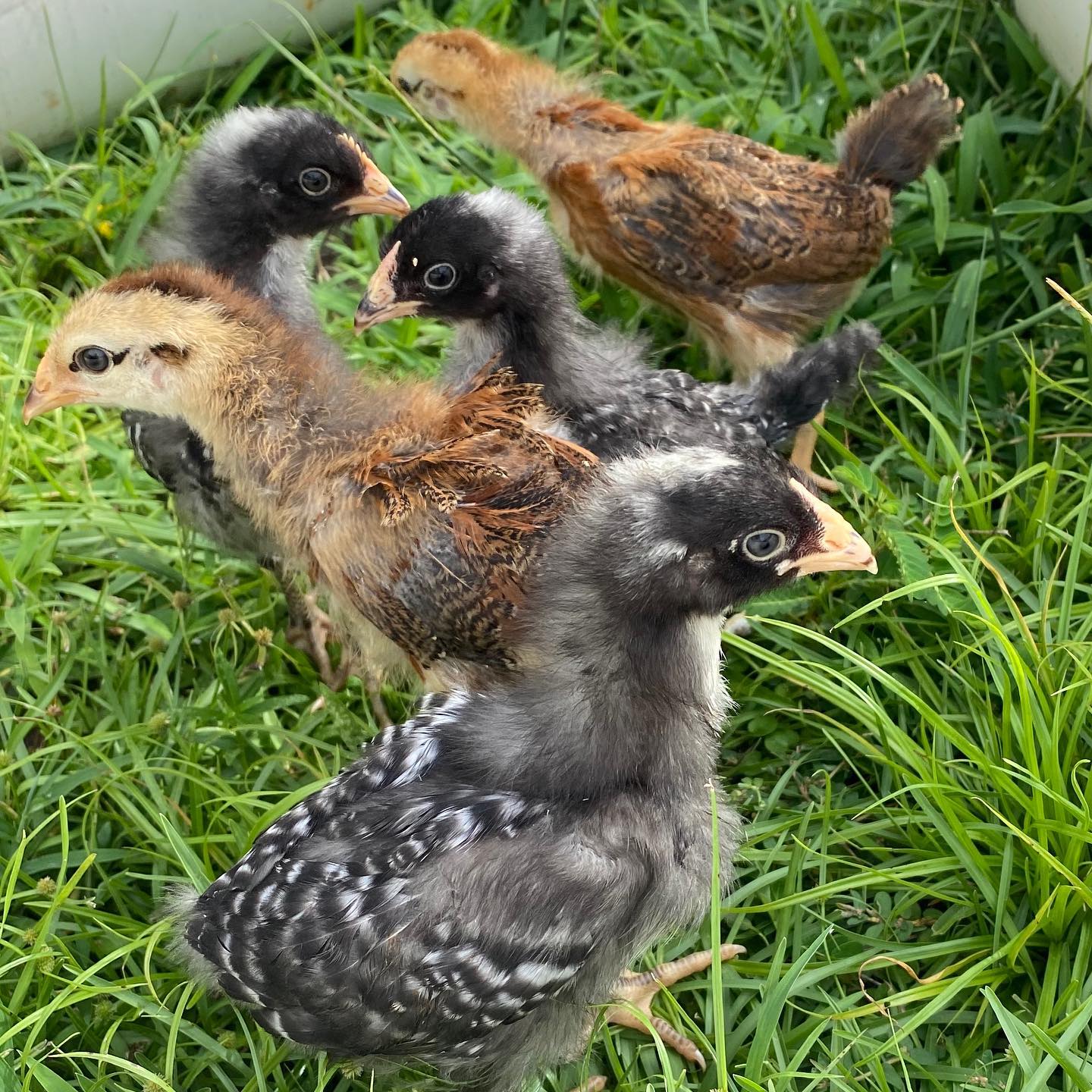
But heritage chickens would take around 28 weeks to mature and don’t reach market weight until they’re 16 weeks.
Keepers need to expect these hens to start laying around 24 weeks.
Live Naturally and Longer
Heritage chickens are free-range birds that forage for their own food and thrive without human intervention. This way, they make self-sufficient chickens.
And they can live longer for 10-15 years or more. Also, they can provide you with a pension of eggs after 5 years, while hybrids fail after 2 years.
Different than Others
Heritage chickens are different from hybrid and commercial chickens, such as Golden Comets, ISA Brown, and Sapphire Gem.
Hybrid and commercial chickens are bred for specific purposes (eggs or meat). For example, Red Star can lay 300-340 eggs per year after 18 weeks, while Hubbard Redbro weighs between 6 and 7.3 lbs during 9 – 11 weeks
They quickly grow and mature but face several health issues and have a short lifespan (2 – 5 years)
Also, the lab-developed chickens are inefficient foragers and depend on pellets.
The Livestock Conservancy also repeats the same criteria for heritage chickens, including APA Standard Breed, naturally mating, long, productive outdoor lifespan, and slow growth rate.
15 Heritage Chicken Breeds
1. Rhode Island Red
If you asked about Rhode Island Red, the old farmers would tell you how they’re America’s best chicken breed. They’re dual-purpose breeds developed between the 1880s and 1890s.
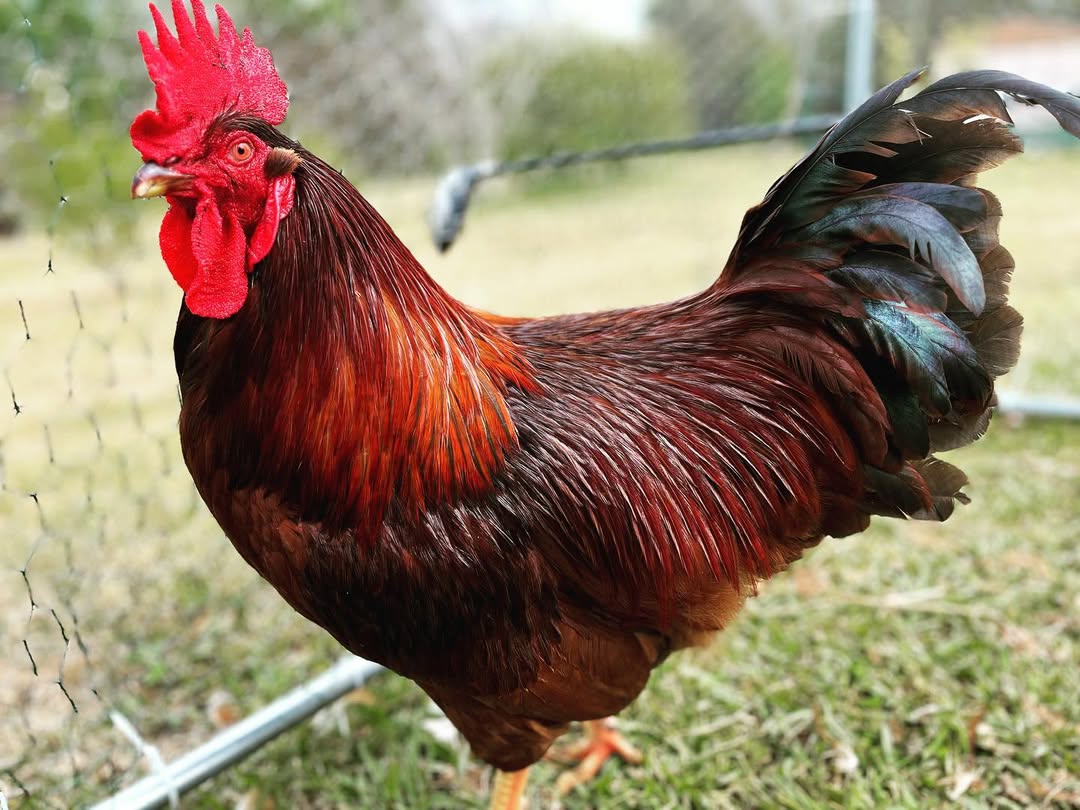
Their ancestors are Shanghai, Malay, Java, and Brown Leghorn chickens.
As a keeper, you can expect hens to be 6 lbs and the roosters to be over 8 lbs. The hens give 200 – 300 large brown eggs every year.
2. Plymouth Rock (Barred Rock)
Plymouth Rocks came for the first time in Boston, Massachusetts, as a breed in 1849. And that was barred rock in color, and hence the nickname.
Spanish, Dominique, White Cochin, Buff Cochin, Black Java, and Brahma are the parents that give several varieties such as White, Silver Penciled, Buff, Partridge, Columbian, and Blue.
I like how quickly they grow and reach market weight, typically around 8-12 weeks. 7.5 lbs for hens and 9.5 lbs for a rooster after they mature is a good deal. And don’t forget, they can yield an average of 200 brown eggs per year.
3. Orpington (Buff Orpington)
This English breed, which was developed in 1886, arrived in the US just 5 years later. They make good broilers, having 2 or 2.5 lbs within 8 – 10 weeks.
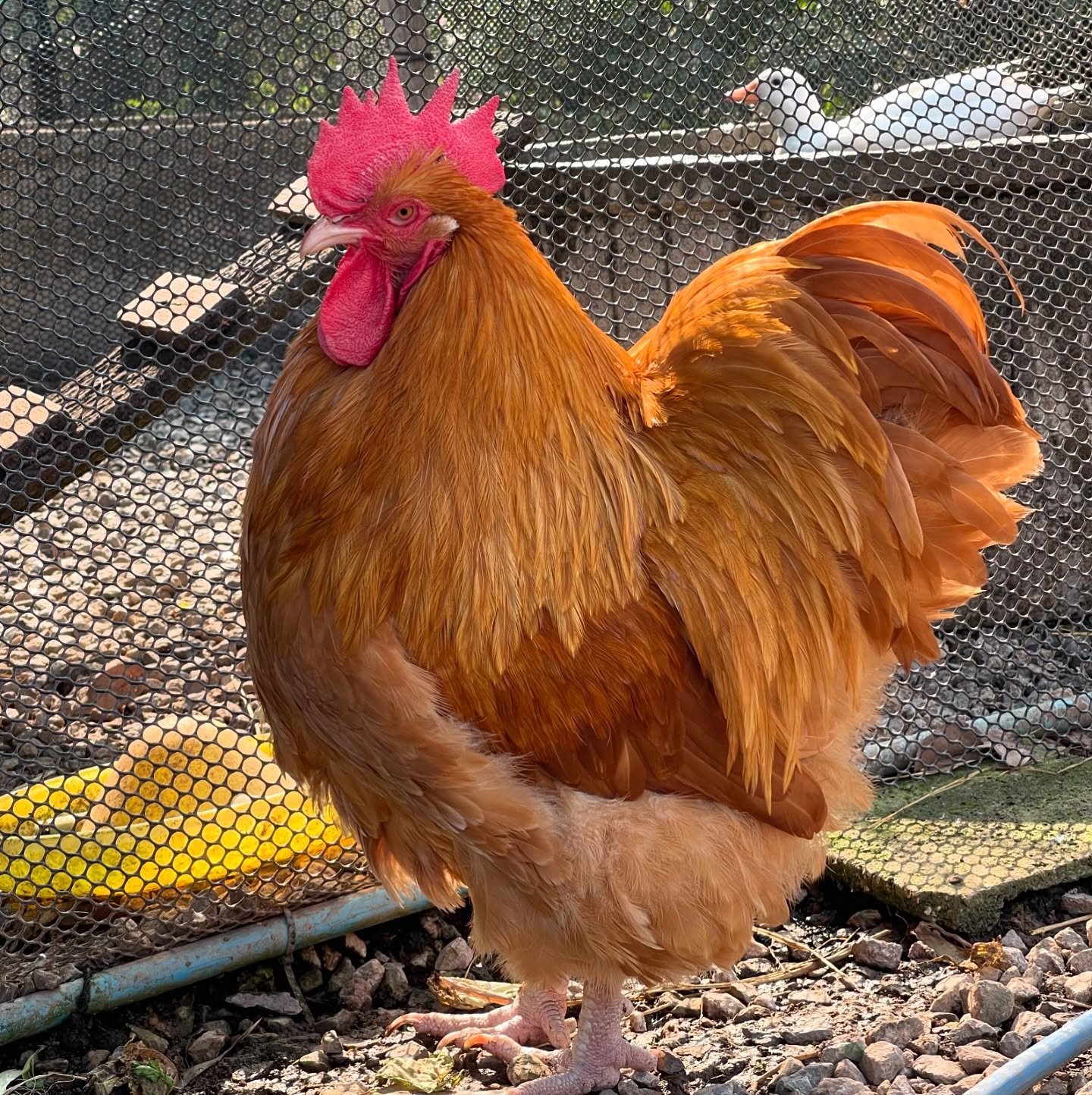
At their full size, you can expect them to be 8 lbs hens and 10 lbs roosters. The ladies also lay 160 – 250 dark brown eggs every year.
4. Sussex
Earlier, people kept breed names after the place they originated, and it’s quite easy to know where they come from.
This is one of the oldest chickens that dates to Roman times, around 43 AD. Every chicken keeper has a fancy for this English chicken to be in their coop once in their lifetime.
If not for their yield, you will fall for speckled Sussex’s beauty.
By the way, they can grow 7 lbs to 9 lbs in weight and lay 200 – 250 large tan or brown eggs a year.
5. Australorp
Australop was bred from Orpingtons in Australia between 1900 and 1922. It is prized as the World record holder for egg-laying (364 eggs in a year).
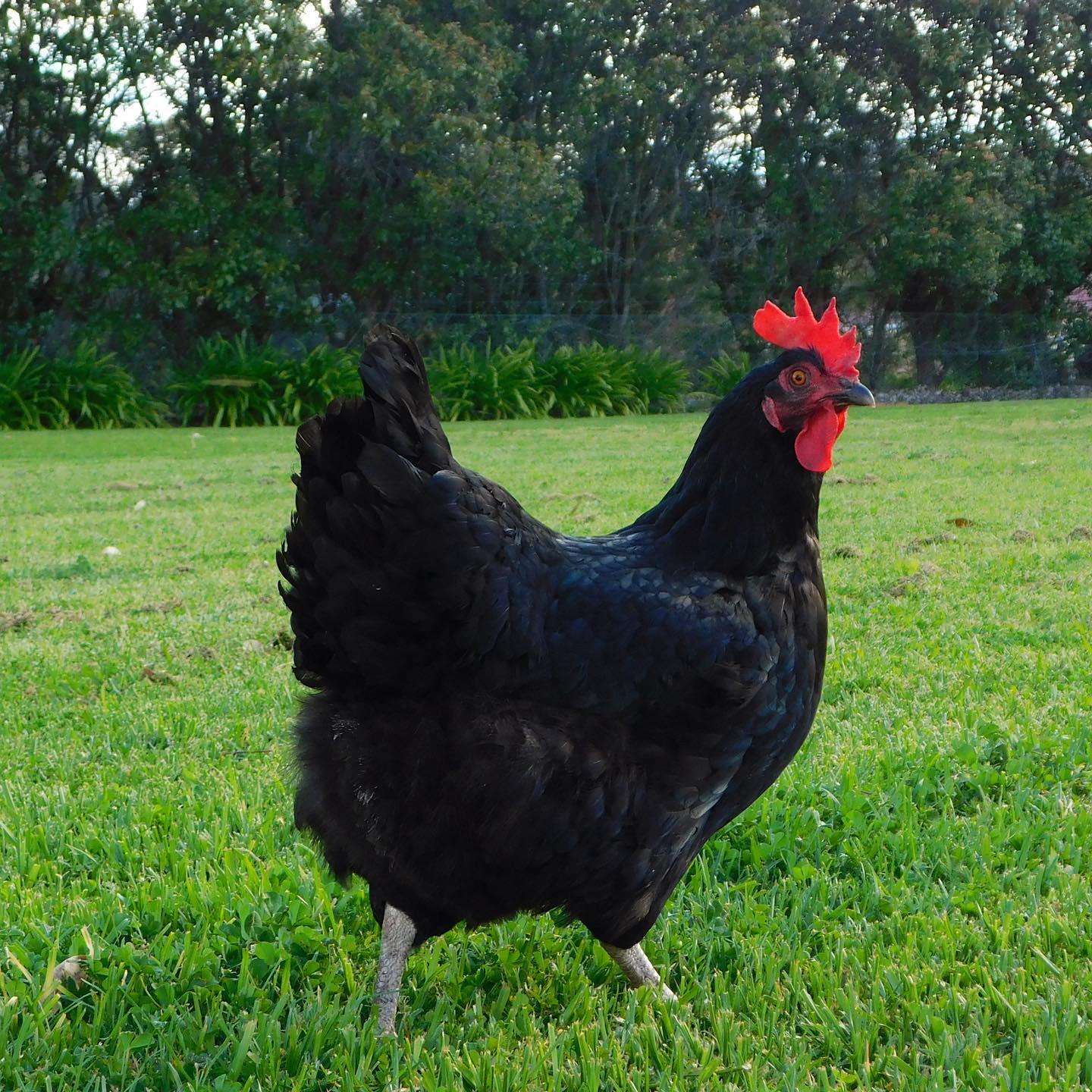
You can expect the hens to lay tinted to light brown 250 eggs per year, on a bare minimum yield.
These chickens also give you good meat, with males and females weighing 8.5 lbs. And 6.5 lbs respectively.
6. Wyandotte
It was named after a Native American tribe and bred for cold climates. Wyandotte chickens originated from Dark Brahma, Spangled Hamburgs, and other breeds.
The firstborn was a Silver Laced Wyandotte.
Apart from their charm, they make good table birds with a hefty rooster around 8.5 lbs and a hen 6.5 lbs. They’re consistent layers of brown eggs, 180 to 260 eggs per year.
7. Dominique (Dominicker)
This is known as America’s oldest chicken breed and has been farmed since at least the 1750s.
Dominique got shape and uniformity after crossing several Asian varieties. They’re medium-sized chickens that grow 5 – 7 lbs of meat on average.

I must tell you, the girls are consistently able to produce 230-275 medium-sized eggs a year, ranging from light to dark brown.
8. Jersey Giant
Jersey Giant is the largest heritage chicken breed, which was originally bred to replace turkeys for meat. Two brothers, John and Thomas Black, created the Jersey Giant chicken during 1870 – 1890 in Burlington County.
They created it from crossing Black Javas, Black Langshans, and Dark Brahmas.
The mature roosters weigh 13-15 lbs and hens reach 10-11 lbs, while black chickens weigh an extra pound than white varieties.
I feel their meat is excellent, and one bird is enough to feed a family of four. The hens also lay 150-200 dark brown to light cream eggs per year.
9. New Hampshire Red
It is a successor of the earlier breed, the Rhode Island Red, which was bred in the early 1900s.
As you keep this breed, you can notice the chickens growing slightly faster, with males reaching 8.5 lbs and hens 6.5 lbs after maturing.
Chickens are also decent layers that give 200-220 large light-brown eggs yearly.
10. Delaware
This American breed was almost lost to industrial strains. As it was bred for the broiler industry, many small farms or homesteads have no idea about it.
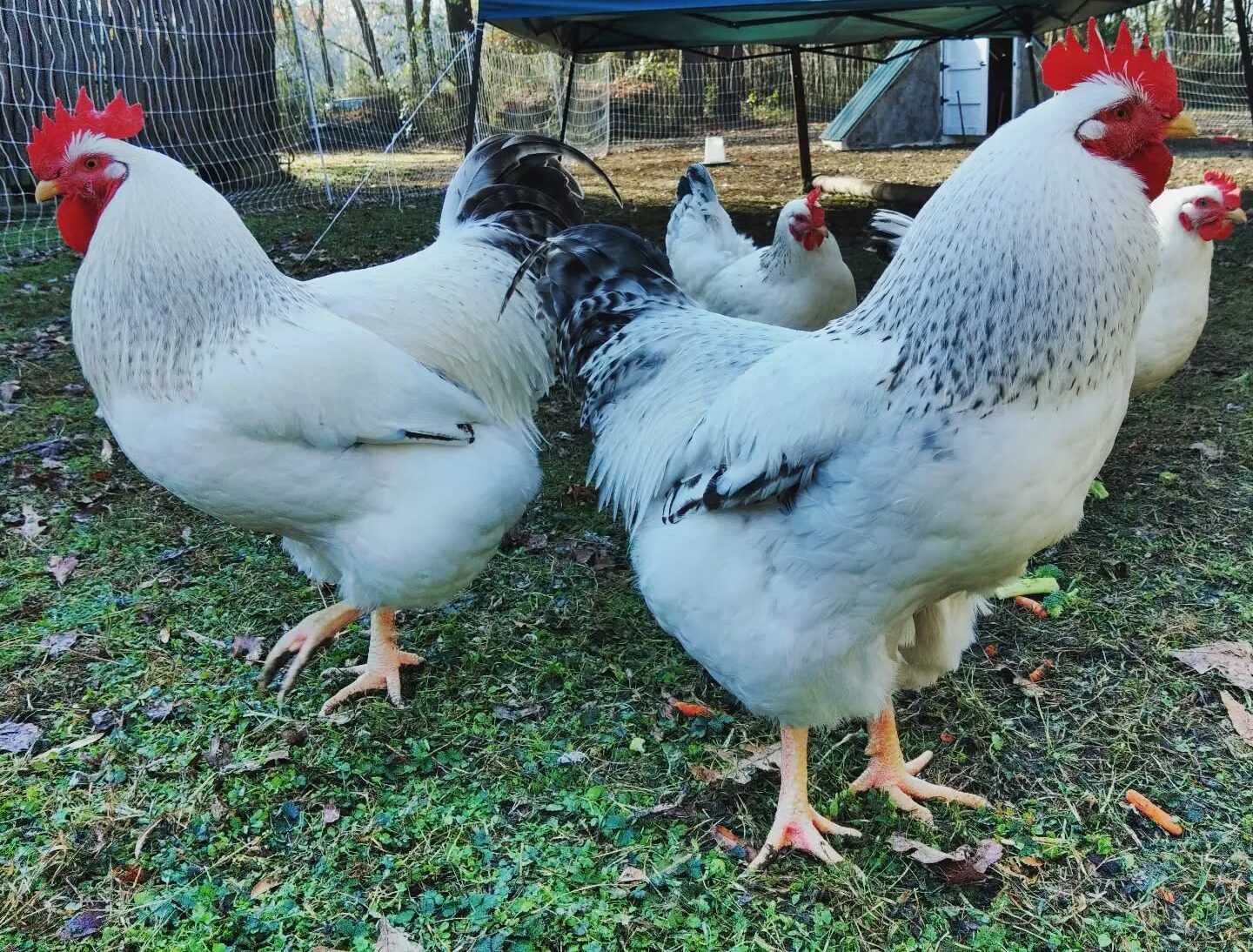
George Ellis from Delaware took Barred Plymouth Rock roosters and New Hampshire hens to create this breed.
Chickens with white feathers with light black barring grow from 6 lbs to 8 lbs. Also, the hens lay 4 large to jumbo eggs per week with 200 light brown eggs yearly.
11. Buckeye
Buckeye was created by a woman breeder, Mrs. Nettie Metcalf of Ohio, from Black-Breasted Red Game roosters and half-Cochin pullets.
They are deep red chickens and make excellent foragers and mouse removers.
You can expect your mature roosters to weigh 9 lbs, and hens to weigh 6.5 lbs. Also, the ladies lay medium-to-large-sized, brown eggs, 175-240 eggs per year.
12. Andalusian
Although their origin is unknown, Andalusian chickens arrived in America between 1850 and 1855.
This Mediterranean breed boasts striking blue plumage, a result of crossing black Andalusians with white ones. When two Blue Andalusian chickens come, they get 25% black chicks, 50% blue, and 25% white or splash chicks.
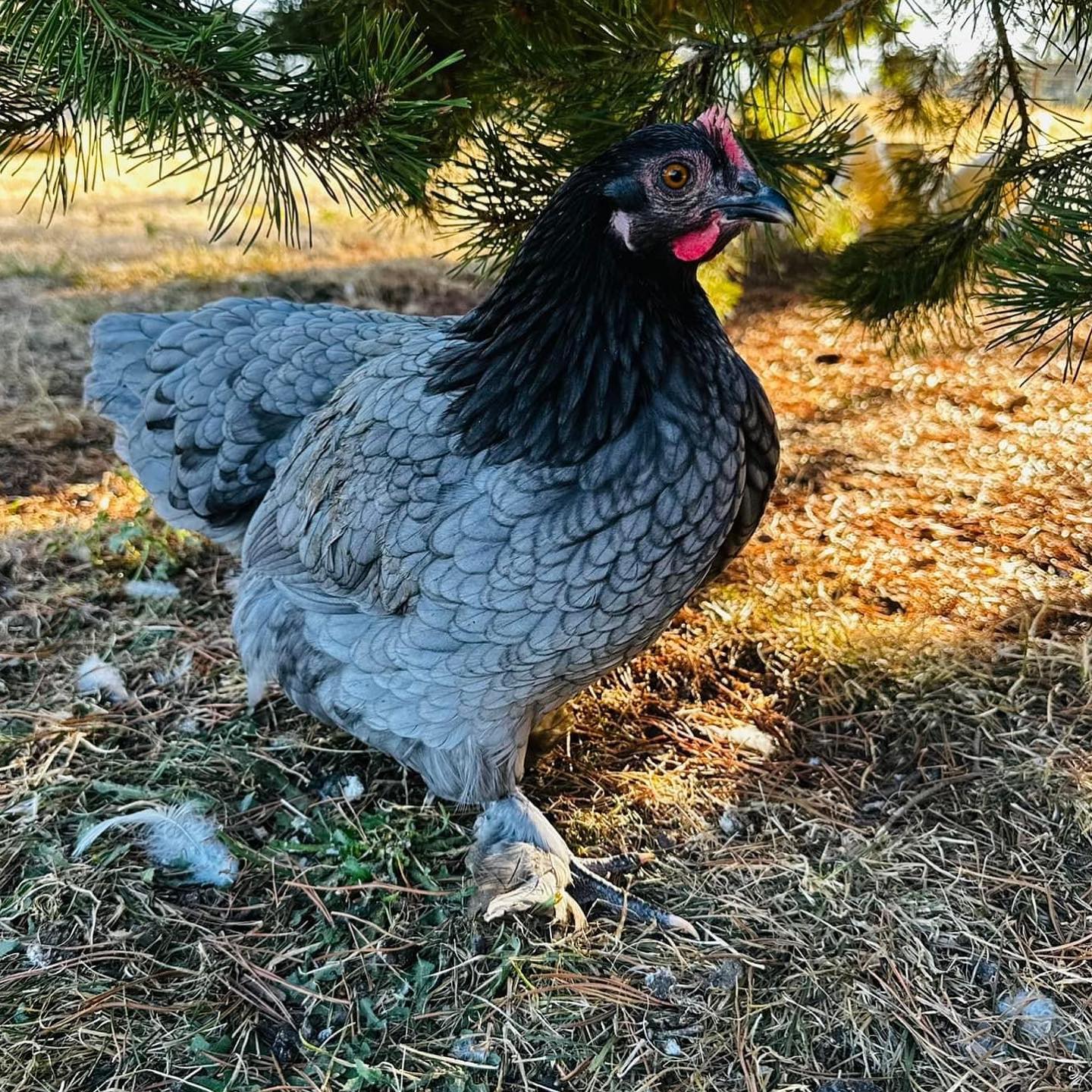
These chickens grow 5.5 lbs in hens and 7 lbs in roosters.
Also, the hens are moderate layers that produce 160-200 medium to large white eggs each year. I like how they also lay eggs in winter.
13. Brahma
Brahmas are called the “King of Chickens,” with roosters growing up to 12 lbs and hens reaching 12 lbs. So, they are great for meat and ornamental value.
These massive, feather-legged heritage birds originated in Asia and were introduced to the United States from China in the 1840s.
They’re cold-hardy birds, which can lay 200 large, medium-brown eggs annually.
14. Chantecler
This is the first Canadian chicken breed. The first Chantecler came from the grouping of a Dark Cornish rooster with a White Leghorn hen. Then, a Rhode Island Red rooster and a White Wyandotte pullet.
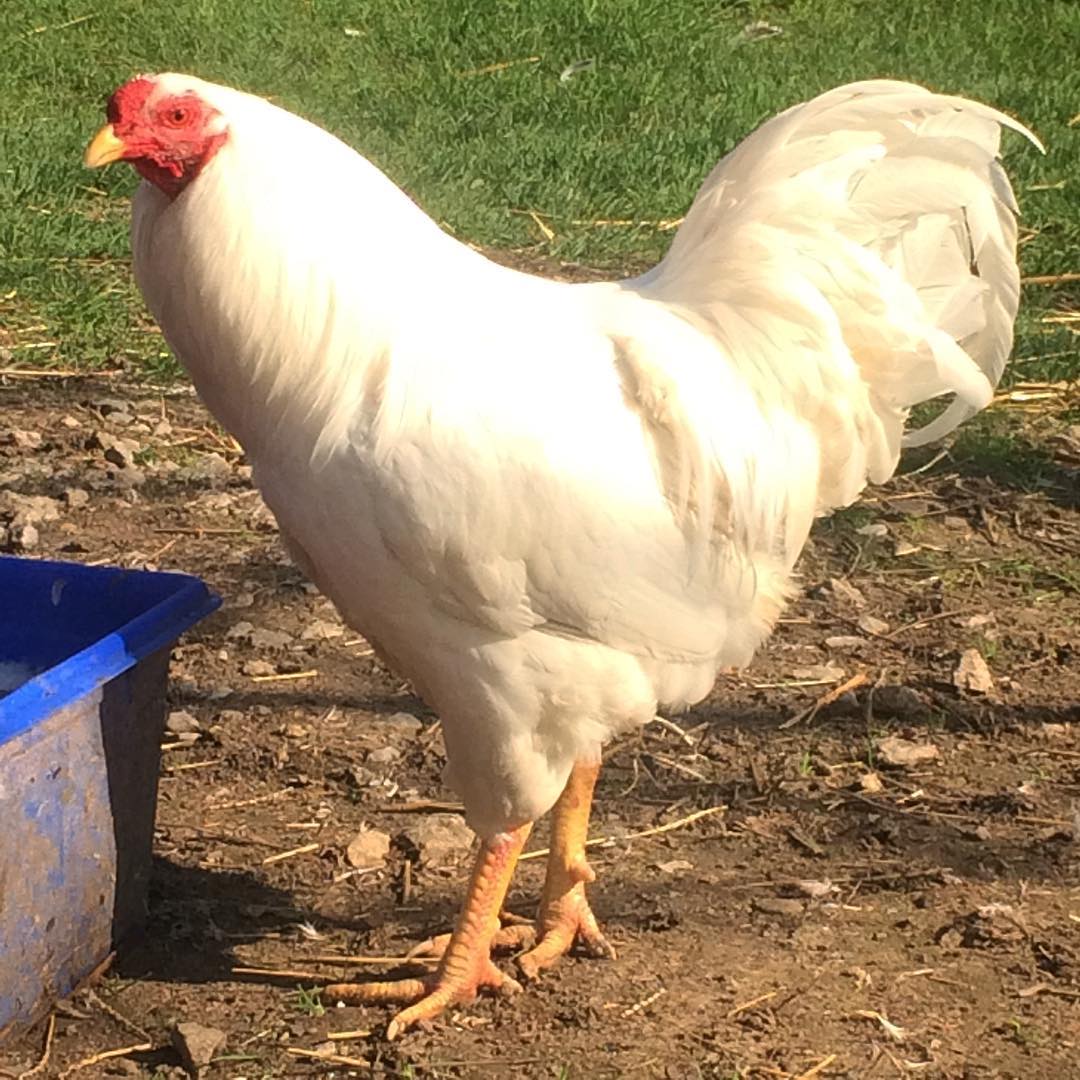
They were developed for cold climates, so they are ideal for northern homesteads.
You can expect roosters to weigh 8-9 lbs and hens to weigh 6.5-7.5 lbs. Chantecler hens lay up to 220 light brown or pinkish eggs every year.
15. Dorking
Dorking is an ancient Roman-era breed, one of the oldest in Europe, which arrived in America in 1840.
These are unique five-toed chickens and have excellent meat flavor. 9 lbs of roosters and 7 lbs of hens also make excellent broiler chickens.
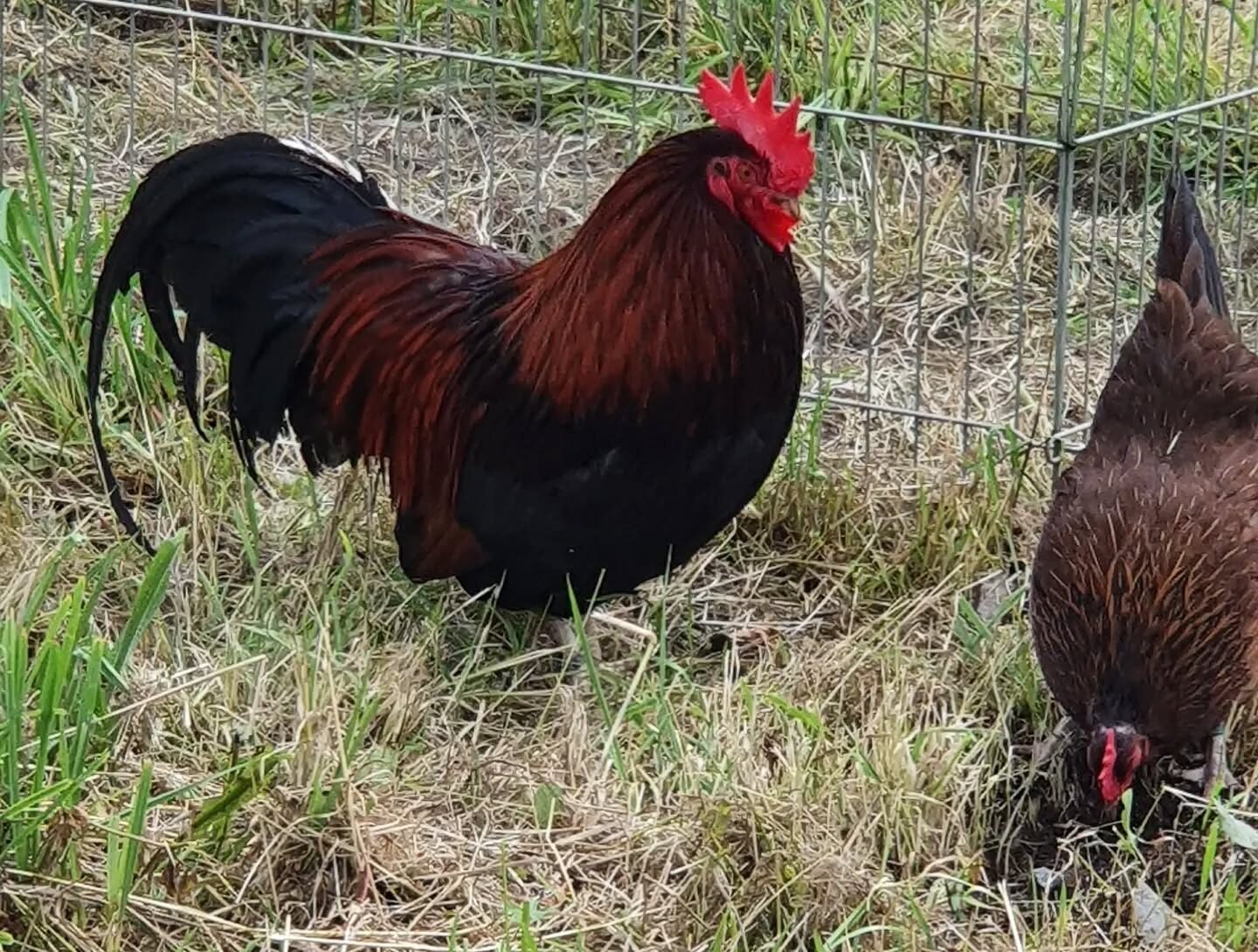
The hens are also moderate egg producers, 150-200 white or creamy medium to large eggs every year.
Final Thoughts
I have a few Rhode Island Red roosters and hens, which continue my heritage chicken supply. They regenerate their own flock, so I don’t need to order from a hatchery.
If you want to breed heritage chickens, take two big and healthy roosters and hens.
And change the parents (one of your homestead and another from somewhere else) after a generation or two to avoid health issues.



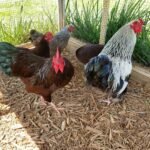





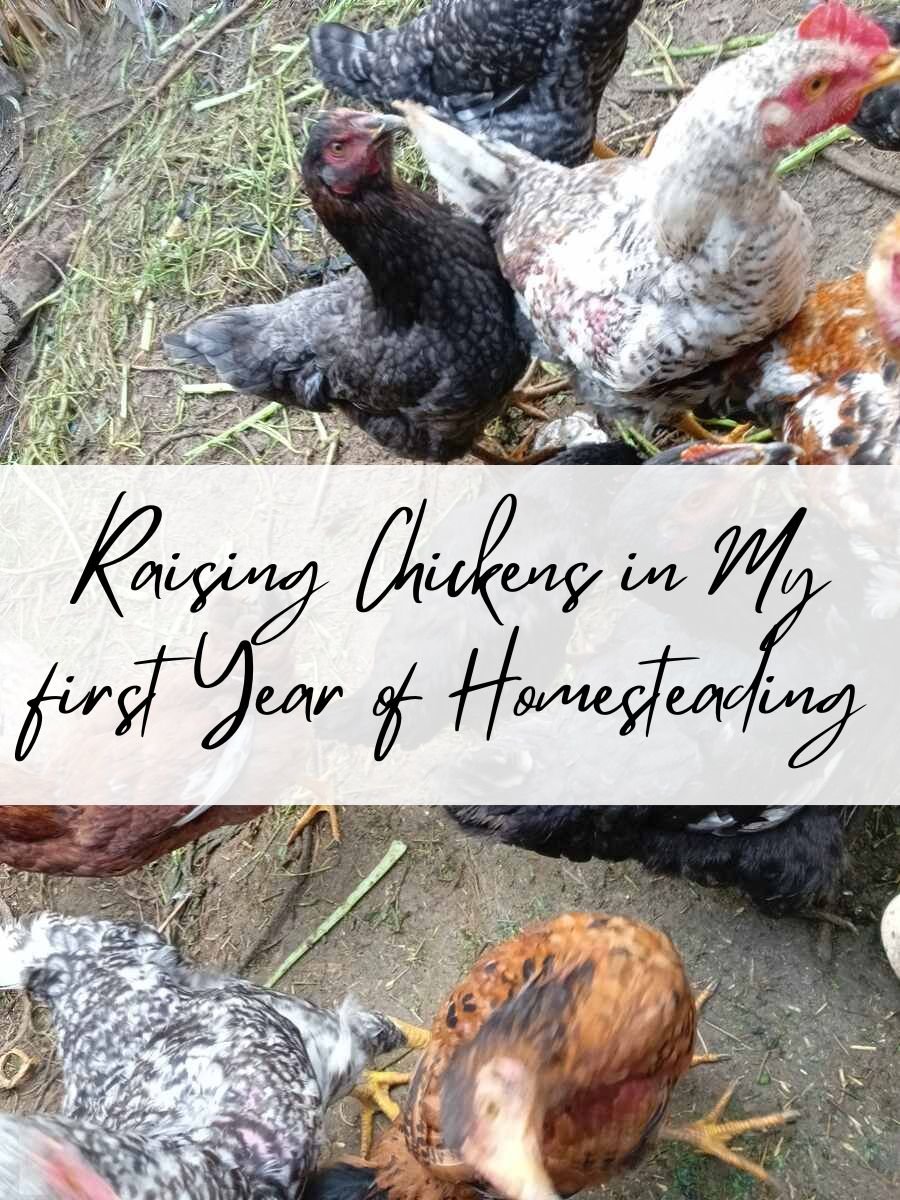
Leave a Reply